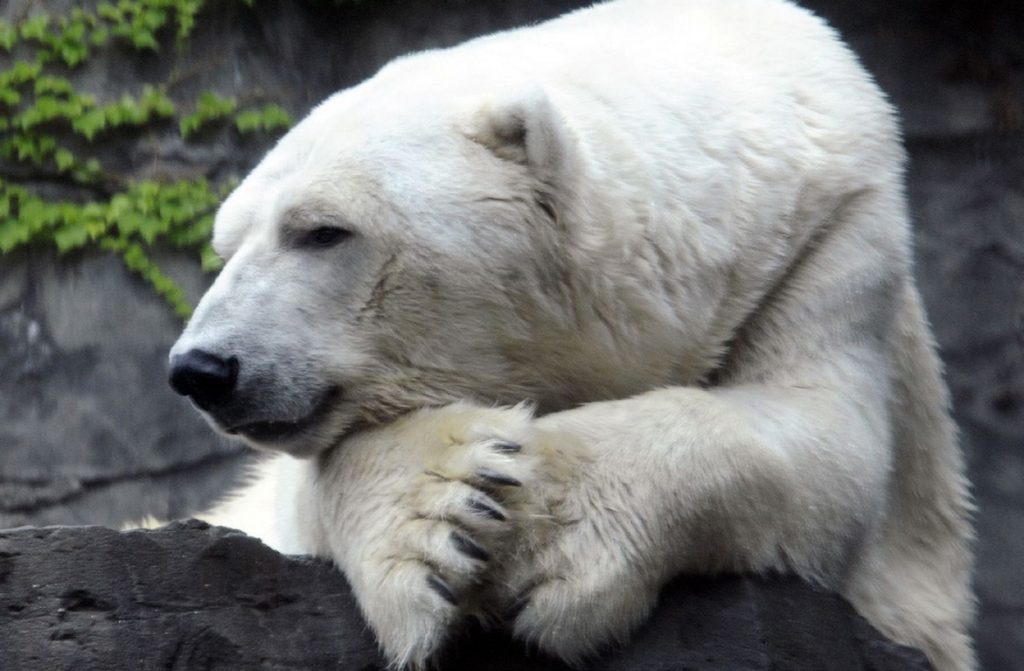When I was younger, I claimed to be an animal lover. I used to love going to zoos so that I could see animals up close and watch in awe whenever they interacted with other animals or showed their quirks.
When I became vegan, I’ve learned to truly love animals.

It now breaks my heart to see animals in captivity just for entertainment, and I realized that their interesting behaviors actually have a disturbing meaning.
Drowning in misery
In mid-1990s, Gus the polar bear became famous in Central Park Zoo, New York.
Laurel Braitman shares in her book “Animal Madness: How Anxious Dogs, Compulsive Parrots, and Elephants in Recovery Help us Understand Ourselves” that the zoo’s visitors became uncomfortable as Gus continuously swam in his cage’s pool in a figure 8 pattern for very long hours, sometimes 12 hours a day.
Livin’ La Vida Loca
Ricky Martin may have enjoyed “Livin’ la Vida Loca,” but animals in captivity won’t.

Animals who are supposed to live in the wild have been known to “go crazy” when forced to live in unnatural habitats, such as zoos.“Zoos as institutions are deeply problematic,” Braitman told Laura Smith in a 2014 interview for Slate. “It’s impossible to replicate even a slim fraction of the kind of life polar bears have in the wild.”
The bipolar bear
Gus’ disturbing behaviors earned him not only a “cute” nickname, the “Bipolar Bear,” but also a dose of antidepressants and behavioral therapy.
He became the first zoo animal in history to be treated with antidepressants.
If looks could kill
Aside from Gus’ swimming marathon, another behavior that caught people’s attention was the way he predatorily gazed at children from his underwater window, as if he would maul the children if given a chance to escape.

The polar bear’s disturbing gaze prompted the staff to put up barriers so children wouldn’t be too scared of him.
“Zoochosis”
There are many studies proving that animals can also have mental health problems, just like humans. But Temple Grandin and Catherine Johnson explained in “Animals Make Us Human” that these mental health problems “almost never occur in the wild.”
In captivity, the behaviors were so common that professionals eventually came up with a term to describe them: zoochosis, derived from psychosis caused by confinement or captivity.
With us, not for us
It may be fascinating to see how wild animals act right in front of us instead of just on TV, but let’s not forget that once a zoo closes for the day, while visitors go home to their families, the zoo animals remain confined in their cages.

It is easy to love companion animals, such as dogs and cats, because we are taught implicitly that they’re the kind of animals we should care for. But animals killed for consumption, experimented on, and exploited for entertainment also have feelings and want to be free — like we all should be.
Disturbing behaviors of captive animals
Animals in captivity cope in different ways, but there are some coping mechanisms too common that humans end up thinking they’re just “cute” behaviors that animals show to “entertain” visitors.
Irregular pacing
Irregular, continuous pacing is the most common behavior that animals show in their confinement. It is so common that people just think it’s the animals’ way of exercising.
Di Lamont shared in a One Green Planet article that animals are easily distracted when they start pacing but will eventually detach from their surroundings, as if under a trance that prevents them from breaking their gaze or pace.
Over-grooming
Over-grooming is common in rodents, birds, and primates in captivity or in stressful situations.
Animals under a lot of stress develop a compulsive desire to groom themselves or an obsessive amount of attention to their body, which usually causes baldness or painful rashes due to constant friction in the targeted area.
Self-mutilation
Some animals bite their body parts, not because they lack food (although some zoos starve the animals, either because of lack of funds or irresponsible staff), but because they suffer anxiety from living in a cage that will never compare to the space they enjoy in the wild.
People usually see this behavior as an animal’s way of acting cute or asking for food but is actually a call for help.

Beyond the zoo
Zoos and ocean parks are not the only businesses known to confine and exploit animals for profit. There are those that blatantly exploit and even hurt animals yet get away with it because people are conditioned to see their actions as normal.
As a result, the animals find their own ways of coping, usually in unhealthy ways.
1. Cannibalism in chickens
Numerous investigations by animal groups show chickens in factory farms confined in cages so small that they can’t even spread their wings. The chickens then get so agitated that they start pecking at each other, sometimes even engaging in cannibalism. This eventually prompts poultry farmers to trim the animals’ beaks, often without anesthesia.
2. Sham-chewing in “farm” pigs
Sham-chewing, a repetitive movement of the jaw, is common in female pigs kept in gestation crates. The behavior is a result of the absence of food and, if done continuously, results in mouth frothing. A study by Donald Broom and Andrew Fraser reveals that sows in animal agriculture spend around 90 minutes a day sham-chewing, usually for several consecutive days.
Photos by Argel Ardales
This appeared in Animal Scene magazine’s May 2019 issue.
Related stories:
– The problem with zoos and how to tell which ones are okay
– Zoos, then and now: Changing the norm
– Isko Moreno vows the preservation of Arroceros Forest Park and Manila Zoo





